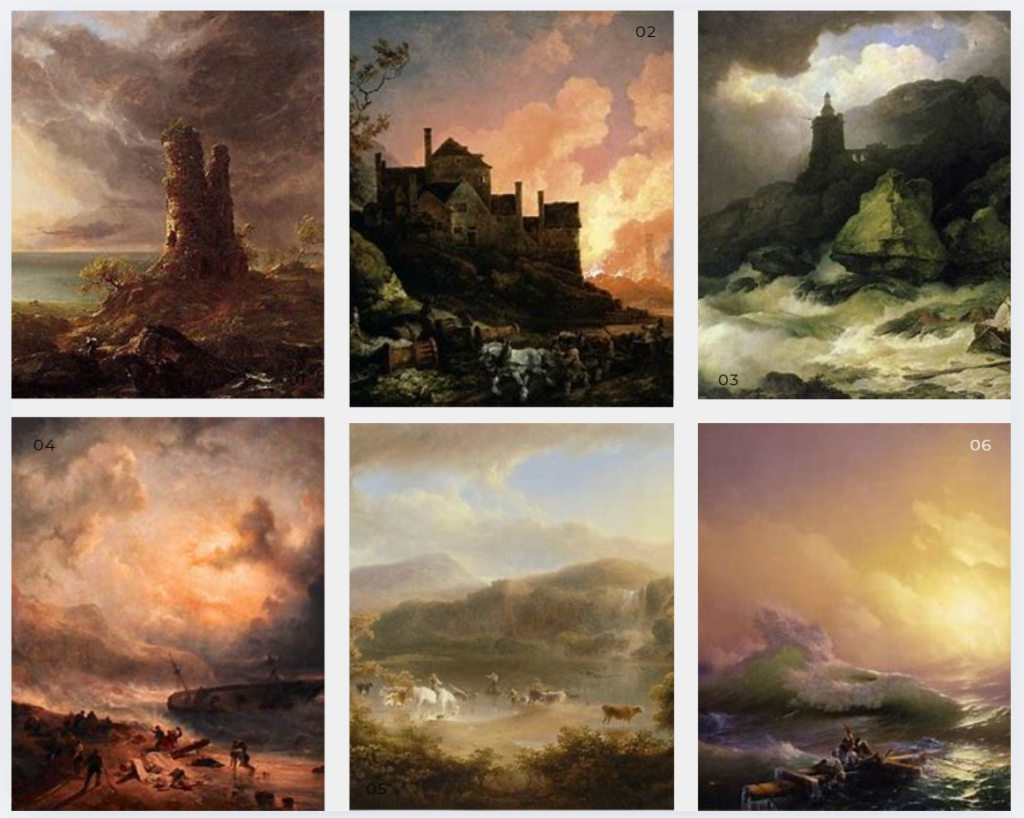What is Romanticism?
Romanticism was a movement in art, literature, and philosophy that started in the late 1700s and became popular in the 1800s, especially in Europe. It focused a lot on emotions, imagination, and nature, kind of pushing back against the more logical and structured ideas of the Enlightenment. People in the Romantic movement believed in expressing deep feelings and connecting with the natural world, often celebrating things like mystery, beauty, and the power of human emotions.
Romantics were interested in things like the supernatural, the unknown, and the darker sides of life. They loved the idea of the “common person” being in tune with nature, and they often explored intense human experiences. Some well known figures from this time include writers like William Wordsworth, Mary Shelley, and Lord Byron, along with artists like J.M.W. Turner and Caspar David Friedrich. Overall, Romanticism was all about celebrating freedom, emotion, and the wonder of nature, going against the more rational thinking that came before it.
Romanticism in Art mood board -

The Sublime -
The sublime is a feeling of awe or wonder, usually when you’re experiencing something so big, beautiful, or powerful that it’s almost overwhelming. It’s like when you look at a huge mountain, a stormy sea, or a vast starry sky, and it makes you feel small, but in a way that’s also kind of amazing. The idea comes from Romanticism, where artists and writers were really into capturing moments that made people feel this mix of beauty and fear, showing how nature or certain experiences could be both terrifying and awe-inspiring at the same time. It’s like a deep emotional reaction to something that’s so grand or intense that it almost feels beyond human understanding.
Mood board of images of the sublime in photography -

How does The sublime represent 'UNION'?
In Romanticism, the concept of the sublime often intertwines with themes of union, particularly the union between humanity and nature, or the merging of the individual with the vast, awe-inspiring forces of the universe. The sublime in Romanticism refers to experiences that evoke feelings of awe, wonder, and sometimes terror, especially when confronting the overwhelming power of nature or the infinite. This experience often leads to a sense of unity with something greater than the self, such as the natural world, the divine, or the collective human spirit.
Here’s how the sublime in Romanticism can represent the theme of union:
Union with Nature
Many Romantic poets and artists, like William Wordsworth, Samuel Taylor Coleridge, and Caspar David Friedrich, believed that experiencing the sublime in nature could lead to a profound connection or union with the natural world. The sublime experience often involves confronting nature’s vastness, power, and beauty, which can make humans feel both small and yet spiritually unified with it.
For example, Wordsworth’s poetry frequently celebrates how moments of intense awe in nature lead to a deeper understanding of the self and the universe, suggesting a harmonious union with the natural world. In his famous poem “Lines Composed a Few Miles Above Tintern Abbey“, he writes about how his previous experiences with nature have shaped his spiritual and emotional union with it.
Union with the Divine or the Infinite –
The sublime is also tied to the theme of union with the divine or the infinite, as nature and its awe inspiring qualities often serve as a metaphor for the infinite or divine presence. The overwhelming beauty or power of the sublime in nature can evoke a sense of unity with God or a higher power.
For example, Kant’s philosophy of the sublime, where the vastness or power of nature forces humans to recognize their own limitations, but at the same time, this recognition allows for a deeper sense of connection with something beyond the human experience. The Romantic sublime transcends individual existence and suggests that, in moments of awe, the individual is united with the infinite.
Union of the Self and the Collective –
Romanticism often emphasized individual experience, but the sublime also encouraged a union between individuals and the collective. The awe of nature, or the sublime experience of beauty and terror, could transcend personal boundaries, allowing individuals to feel connected to the larger human experience. This is particularly evident in William Blake’s works, where he explores the dualities of the individual and the collective, the divine and the earthly, the personal and the universal.
Blake’s poetry often invokes the sublime to illustrate the interconnectedness of all things, human beings, nature, and the divine. In his “Songs of Innocence and of Experience,” he shows how the individual can feel a sense of unity with the universe, particularly through the spiritual and natural realms.
Union Through the Emotional Impact of the Sublime –
In many Romantic works, the sublime evokes strong emotional responses, often feelings of fear, awe, or ecstasy that ultimately lead to a sense of unity with the subject matter. The feeling of awe inspired by the sublime overwhelms the individual, dissolving boundaries between self and nature, self and God, or self and the universe. This transcendence through emotion can create a sense of union with something much larger than oneself..
How romanticism relates to my project with the theme of 'UNION' –
Romanticism often depicted nature as both beautiful and overwhelming, and my sunsets can reflect this, showing the powerful union between human, animal, and nature. Silhouettes against the vast, glowing sky could embody themes of emotional depth and connection as romanticism does.
- Inspiration: Romantic painters like J.M.W. Turner, who played with light, could inspire the dramatic play of light in your work, reflecting both beauty and the depth of human relationships.

Shannon, you must begin to produce blog posts that show new photoshoots, creativity and experimentation producing images in relation to your statement of intent and artists case studies. The first day of your exam is next Wed 2 April and you will use that day editing image and working toward final outcome(s)